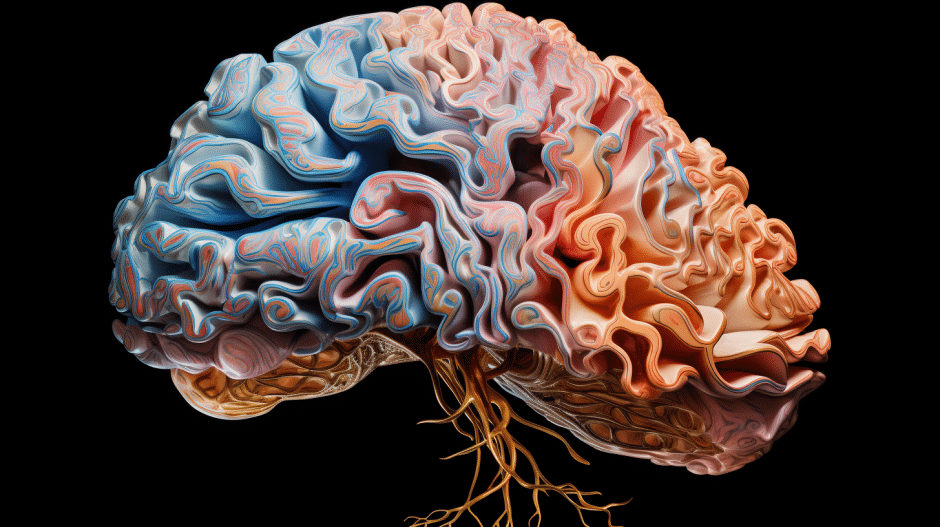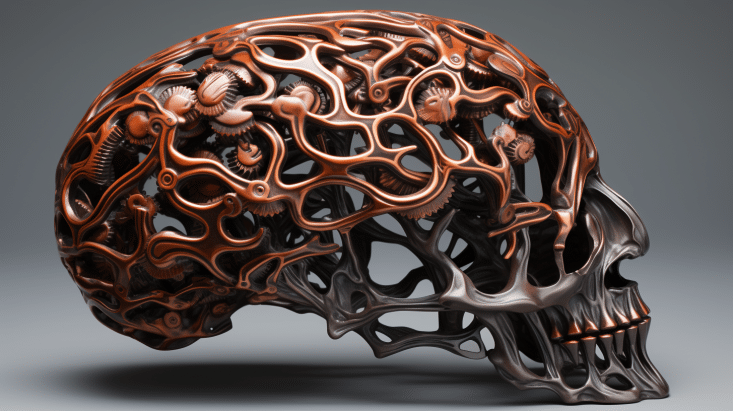Researchers have uncovered an important new mechanism that causes inflammation and damage to the brain’s white matter in Alzheimer’s disease.
This discovery about how brain cells called microglia die could lead to new Alzheimer’s treatments.
Key Facts:
- The study found that microglia, which are immune cells in the brain, die through a process called “ferroptosis” in Alzheimer’s disease.
- Ferroptosis involves too much iron accumulation and lipid damage in cells.
- Dead and dying microglia were found in the white matter of Alzheimer’s disease brains. This white matter damage is a hallmark of the disease.
- Stopping ferroptosis could potentially protect microglia and prevent white matter damage in Alzheimer’s.
Source: Annals of Neurology (21 Aug 2023)
The Inflamed Aging Brain
As we age, our brains slowly become more inflamed.
Chronic inflammation contributes to many age-related brain diseases, like Alzheimer’s disease and vascular dementia.
These diseases damage the brain’s white matter, which are bundles of wiring that allow brain areas to communicate.
White matter makes up the “information superhighway” of the brain.
As white matter breaks down, brain functions like memory and thinking decline.
Scientists have long suspected that inflammation-related immune cells in the brain called microglia play an important role in white matter damage in Alzheimer’s and dementia.
Activated microglia are found around white matter lesions in these diseases.
But how exactly microglia are involved has remained a mystery.
Now an exciting new study from the University of Washington School of Medicine has uncovered a potential major piece of this puzzle.
The researchers examined brain tissue from over 100 donors who had Alzheimer’s disease or vascular dementia.
They discovered that diseased white matter contained large numbers of microglia undergoing cell death through a process called “ferroptosis.”
The Discovery of Ferroptotic Microglia
Our brains have high levels of iron. Iron allows brain cells to use oxygen, supports metabolism, and helps with cell signaling.

But too much iron can also be toxic and create damaging oxidative stress.
In ferroptosis, cells accumulate too much iron and lipids (fats).
This leads to lipid damage through oxidation, causing the cells to essentially rust from the inside and die.
The researchers found strong evidence that microglia are dying through ferroptosis in the white matter lesions of Alzheimer’s and dementia patients:
- Microglia had high levels of iron and the iron-storage protein ferritin
- They showed signs of severe lipid oxidation injury
- Key antioxidants involved in preventing ferroptosis were increased
- Genes related to iron metabolism and preventing ferroptosis were activated
- There were no signs of other cell death types like apoptosis
This points to ferroptosis as the culprit behind white matter microglia death in these diseases.
Why Are Microglia So Vulnerable?
But why are microglia uniquely vulnerable to ferroptosis in aging white matter? The study suggests several factors are at play:
- Microglia build up high iron levels as they try to clean up myelin debris, the remains of damaged myelin insulation around nerve fibers.
- They undergo metabolic changes as they age, making them less able to handle oxidative stress.
- Increased lipid accumulation in aged microglia allows more lipid damage by iron.
- Recurrent small strokes in the aging brain’s small blood vessels create more myelin debris for microglia to clear.
Together, these changes make aged microglia prone to ferroptosis. As they die, the brain’s white matter decays even further.
Implications for Alzheimer’s and Dementia
This microglia discovery provides fresh insight into what drives white matter damage in aging and Alzheimer’s disease. It also opens exciting therapeutic possibilities.
Blocking ferroptosis could potentially stop this vicious cycle of microglia death and white matter degeneration. This could protect thinking and memory functions in aging people and dementia patients.
More research is still needed to explore ferroptosis-blocking treatments.
But this study illuminates an entirely new approach to tackle the growing challenge of Alzheimer’s and dementia in our aging population.
Protecting Microglia, Protecting the Brain
Healthy microglia are essential guardians of the brain. Like shield-bearing soldiers, they protect and surveil the brain, guarding against threats like infections and plaques.
But in aging and neurodegenerative diseases, microglia can become dysfunctional and even die, leaving the brain unprotected.
Saving microglia from ferroptosis could defend the brain on multiple fronts.
Not only could it prevent white matter damage, but also restore beneficial microglia functions like:
- Clearing debris and toxins
- Fighting infection and inflammation
- Supporting neurons, blood vessels and other glial cells
- Paving the way for re-myelination and repair
Activating a microglia rescue pathway in the brain could thus have far-reaching benefits for protecting our precious gray and white matter as we age.
A Complex Cause Needs Complex Treatment
Alzheimer’s disease has proven maddeningly difficult to treat.
Many drug trials targeting single amyloid and tau proteins have failed miserably.
The reason is clear: Alzheimer’s has complex intertwining causes.
An effective treatment needs to address multiple targets.
Ferroptosis blocking strategies offer an appealing new approach because they could simultaneously:
- Protect microglia to maintain white matter integrity
- Reduce toxic inflammation
- Decrease lipid peroxidation and oxidative stress
- Normalize iron homeostasis
Rather than a silver bullet, Alzheimer’s treatments may need to be silver buckshot.
Stopping microglial ferroptosis could be an important part of this buckshot arsenal against dementia.
But preventing microglial death is just one piece of the Alzheimer’s puzzle.
Optimally, ferroptosis blocking would be combined with therapies that address other factors like:
- Amyloid and tau
- Vascular problems
- Neuronal health
- Cognitive stimulation
- Lifestyle changes
With this multipronged approach, there is growing hope that the threat of Alzheimer’s and dementia can eventually be vanquished.
The Bigger Picture on Brain Aging
Beyond illuminating new directions to slow Alzheimer’s and dementia, understanding microglial vulnerability has bigger implications for our aging brains.
Preserving microglia could help maintain cognitive health into older ages for all of us, not just dementia patients.
Microglial death likely also contributes to “normal” cognitive aging.
Strategies to protect microglia against ferroptosis and other age-related insults could become an important part of the anti-aging, pro-brain health toolkit.
This could help more people successfully “age well” and compress morbidity into the very end of life.
An ounce of microglial protection may thus be worth a pound of cognitive cure.
The ultimate goal is not just curbing dementia, but promoting lifelong brain health.
Exciting Times Ahead in Alzheimer’s Research
For patients and families devastated by Alzheimer’s disease, this research provides new reason to hope.
It lays groundwork for translational research to develop and test ferroptosis-blocking treatments for dementia.
For all aging individuals hoping to keep their cognitive edge, it highlights novel ways we might all be able to boost microglial resilience and stay sharper longer.
And for scientists fighting the complex biology of Alzheimer’s, it reveals an entirely new mechanism driving disease progression.
This moves us one step closer to unraveling the tangled web of Alzheimer’s causation.
Thanks to studies like these, the future of healthy brain aging looks bright.
With the golden years ahead for so many aging Baby Boomers, the timing of this microglial discovery couldn’t be better.
References
- Study: Ferroptosis of microglia in aging human white matter injury
- Authors: Philip A Adeniyi et al. (2023)







